Do you have a dream buyer persona for your product or service?
Do you find yourself disqualifying more leads than you are closing sales?
Why is your perfect audience not buying your product?
If these are questions you find yourself constantly asking, it is likely that you have not yet figured out who your target audience is or how to speak to them.
Many new businesses fail to write out their target market from day one. Even worse, more businesses fail to understand who their target audience is after launch, resulting in a spaghetti approach to targeting; throwing noodles at the wall and waiting for something to stick. While this doesn’t mean they never get sales, it just means their campaigns are working exponentially harder to find the right people.
What if you had the option to put your product in front of the perfect person at the exact moment of them wanting to buy. Sounds pretty good, right? A marketer’s dream. What is this magic I speak of?
No, we aren’t spying on people watching their every move, instead, we are identifying the people who are actually buying your product, also known as your Target Audience.
Compared to generic evergreen ads, Yahoo found that 54% of consumers found personalized ads more engaging and memorable. Understanding who your target audience is will ultimately improve the performance of your marketing strategies by allowing you to create a more tailored approach to your targeting and ads and increase overall brand engagement.
Today we will walk through how to define your target market and how to extract your target audience from that larger group. By doing so, you will be able to develop your marketing plan into a full-funnel strategy, tailor your marketing messages to speak to users who actually want to buy your product, and increase the overall efficiency and productivity of your marketing efforts.
Let’s dive in.
Get brand new marketing strategies straight to your inbox. 23,739 people already are!
1. Determining Your Target Market vs. Target Audience
The first step in establishing a target audience is to understand what the heck a target audience even is. Many business owners mix up the term Target Audience with Target Market which can lead to confusion and inefficient marketing campaigns.
A Target Market is made up of the potential customers your product is designed to help or service. These are the ideal customers that you want to sell to. However, just because they seem to be the perfect buyers, they will not always be the people you find at your checkout; that’s where the target audience comes in.
A Target Audience is the group of people that actually buy your product or service, even if it is not suited or even meant for them. This tends to be a smaller, more narrow audience.
It is important to pay attention to your target audience and understand their behaviors rather than just dreaming about your target market. It’s okay to always work towards your end goal but if there is a segment of users buying your product, why ignore them?
If you have a more niche product, for instance, a healthcare B2B SaaS company, begin your marketing plan by defining your exact target market and use that as a guide when setting up your marketing campaigns. This ensures that your target audience stays relatively close to the users you intended your product to target and will help your brand go in the right direction.
Extracting Your Target Audience From Your Target Market
Now that we know the difference between Target Market and Target Audience, let’s take action and start defining who your buyers are versus who you want them to be. As mentioned above, the first plan of action is outlining your target market. This will provide some guidance to your campaigns so that we aren’t stuck with the spaghetti approach.
2. Defining Your Target Market
What group of people do you intend to buy your product? If you had a dream customer, what would they look like? To define your target market, you will be answering a series of simple questions relating to your product or service:
- “What problem is my product solving?”
- “What makes my product unique?”
- “Who are my competitors targeting?”
- “What does my dream customer look like?”
While you could take all day with this outline, don’t. Think of your target market more as a pathway for your marketing campaigns to walk along. Once you get everything up and running, your target audience will tell you who to narrow down on and segment out.
“What Problem Is My Product Solving?”
Why did you build your product in the first place? What pain points did you see in your industry or society that you felt the need to solve? More importantly, who will benefit the most from your solution? While creating a buyer persona, this is typically the first question you will answer.
Every brand has a problem they are solving, whether you are a fashion brand solving the problem of high-quality products for less than premium costs with a large target market all the way to a B2B software company for health clinics with a smaller and more niche target market. Each of these businesses is providing solutions to certain groups of people, therefore outlining and defining their target market based on the problems they are solving.
“What Makes My Product Unique?”
Unique Value Propositions, or UVPs, everyone has them. Every brand is unique in some sense; what is your unique value proposition? Are you a small business that offers enterprise solutions at a fair price? Or vise versa, are you a publicly traded massive company that offers intimate customer service solutions?
Piggy-backing off the initial question of, what problem your business is solving, understanding what makes your company different from the rest is just as important in defining your target market.
“Who Are My Competitors Targeting?”
If you are in the same industry, it is likely that your target market is similar to that of your competitors. Check out their social media accounts and do some slight digging to see what kind of accounts they are following or promoting. Who do their posts speak to? What is their tone of voice? A quick Instagram, LinkedIn, or Facebook scan can provide you with these answers.
“What Does My Dream Customer Look Like?”
Using the questions above, let’s take it one step further. What audience demographics do you intend to target? What demographics does your product or service best fit?
In the PPC realm, you can set your targeting to any of the following demographics and interests below to create the perfect target market audience.
- Age: Is your product specific to millennials or boomers? Don’t get too specific with age targeting, the decade will suffice.
- Gender: Does your product target a specific gender only, or does it skew more towards one specific gender?
- Location: Is your customer base specific to a certain location only? (i.e. are you a local business?)
- Education Level: Are you in the education space, or does your product serve a distinct education status?
- Language: This one is interesting. Too often I have seen advertisers exclude certain languages due to their service team. By doing this, you will miss out on potentially 60-75% of the world due to people speaking multiple languages.
Outside of these demographics, what other key characteristics are important to your business? Think along the lines of the businesses that qualify for your product.
- Business Size: Does your product or service only fit businesses of a certain size?
- Business Industry: Does a particular industry benefit more from your product/service? Do you have a bread-and-butter in mind?
- Job Title: What job title will be the person responsible for purchase decisions? Does it make sense to only target them?
If you are an eCommerce brand, it may make sense for you to dive deeper into the psychographics of the individual themselves. Psychographics are characteristics pertaining to the more personal details or an individual.
- Interests: What affiliate interests would couple with your brand nicely?
- Life Events: Does your product fit the need of someone going through a specific stage of life? Is there a certain relationship or marital status that works better for your product?
- Household Income: Maybe you are a high-end retailer or eCommerce brand that requires excess income for purchasing decisions.
If your brand is struggling to fill in some of these gaps or characteristics, it’s smart to invest in market research. Market Research can provide you with the cold hard data needed to complete the picture. You’ve likely come across a survey or statistics from the top Market Research company in the world, Nielsen, at some point.
So now you have a solid foundation and understanding of your target market – let’s see how we can use this information to find out more about the users that are actually buying these products or services and conduct some audience research to ensure your marketing campaigns are targeting the right kind of people.
3. Creating The Perfect Buyers Persona Using Your Target Market
Once you are live with your product, it’s time to let the data do the talking. There’s a new sheriff in town and their name is Target Audience. 🤠 A target audience loves the word, “actually”. Let’s take the same questions above and see how we can apply this word to extract our target audience from the target market.
- “What problem is my product actually solving?”
- “What actually makes my product unique?”
- “Who are my competitors actually targeting?”
- “What do my current customers actually look like?”
The reason the word “actually” is so important here is that it teaches you to think about the real people that are buying your product rather than dream about the people you wish were buying your product.
“What Problem Is My Product Actually Solving?”
Now that we know what problem your product is intended to solve, it’s time to take a look at what problems it is actually solving.
What this means, you may have thought your new offer would be helping person X save time with marketing reporting but after launch, you find that people love the channel integration offerings more than the time-saving component.
This information can be obtained through customer surveys from email campaigns, or even website pop-up questionnaires.
“What Actually Makes My Product Unique?”
Again, use the words from your customers here. Customer surveys or even peeping into your Business Reviews to see what are the features or services that stand out to your buyers. Maybe you have an all-star customer support team that puts you in front of the pack. Maybe your eCommerce brand has a seamless fair return policy process, making your customers feel much safer purchasing from your site.
Whatever it is, your current customers are likely bragging about it online or to their colleagues; finding a way to incorporate feedback into your campaigns will help you decipher your true UVPs.
“Who Are My Competitors Actually Targeting?”
Chances are, your competitors already have a few customers in their portfolio. This is great news for you because now you can use their own data to further define your target audience.
If your competitors are online, you can use various spying tools to analyze their ads and copy to give you a better idea of who they are talking to.
Additionally, check out your competitors' featured customer sections of their websites. Or even better, their case study pages; this is the best way to peep who they are working directly with and helps you see which titles are engaging with similar products in the industry.
“What Do My Current Customers Actually Look Like?”
The easiest and most effective way to define your target audience is by looking at who is actually buying your product! (Duh). Obviously, this requires your product to be live and ready to sell, so it is not always the most available step for new businesses.
We will break this down more in the next section, but for now – take this as a simple task to examine your current customers and understand how they differ from your target market as well as discover how you can leverage Google Analytics and social media campaigns to create messaging that speaks more directly to this specific group of people.
Using Social Media and Google Data To Perfect Your Target Audience
Google and social media platforms offer the best audience insights and demographic information pertaining to your marketing campaigns. To gain more insights even outside of pay-per-click advertising, be sure to integrate your website with Google Analytics to ensure you are collecting audience information through all of your digital marketing efforts.
For added clarity, use UTM parameters on your URLs within your campaigns so that you are able to track down to the keyword or ad level of conversion actions. For more information about proper URL tracking, check out our blog on PPC Attribution.
Within Google Analytics, the world is your oyster.
Google Analytics offers an extremely granular view of your audience make-up even beyond paid advertising. Within the platform, you can see the audience breakdown by demographics and interests, the user behavior on your site, and also the user journey from awareness to purchase.
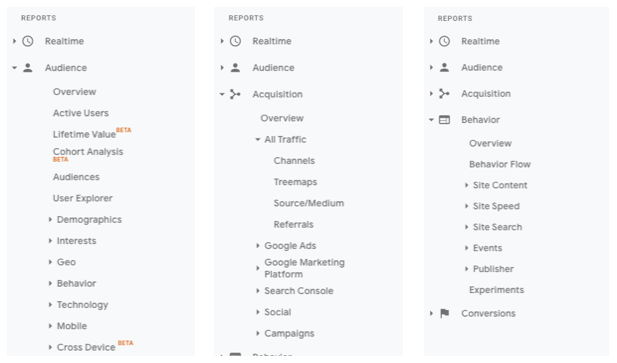
Facebook Ads has its own audience research insights called, Facebook Audience Insights. Facebook Audience insights provides a breakdown of an audience of your choosing surveyed against a larger audience segment (either fans of your page, or Facebook as a whole).
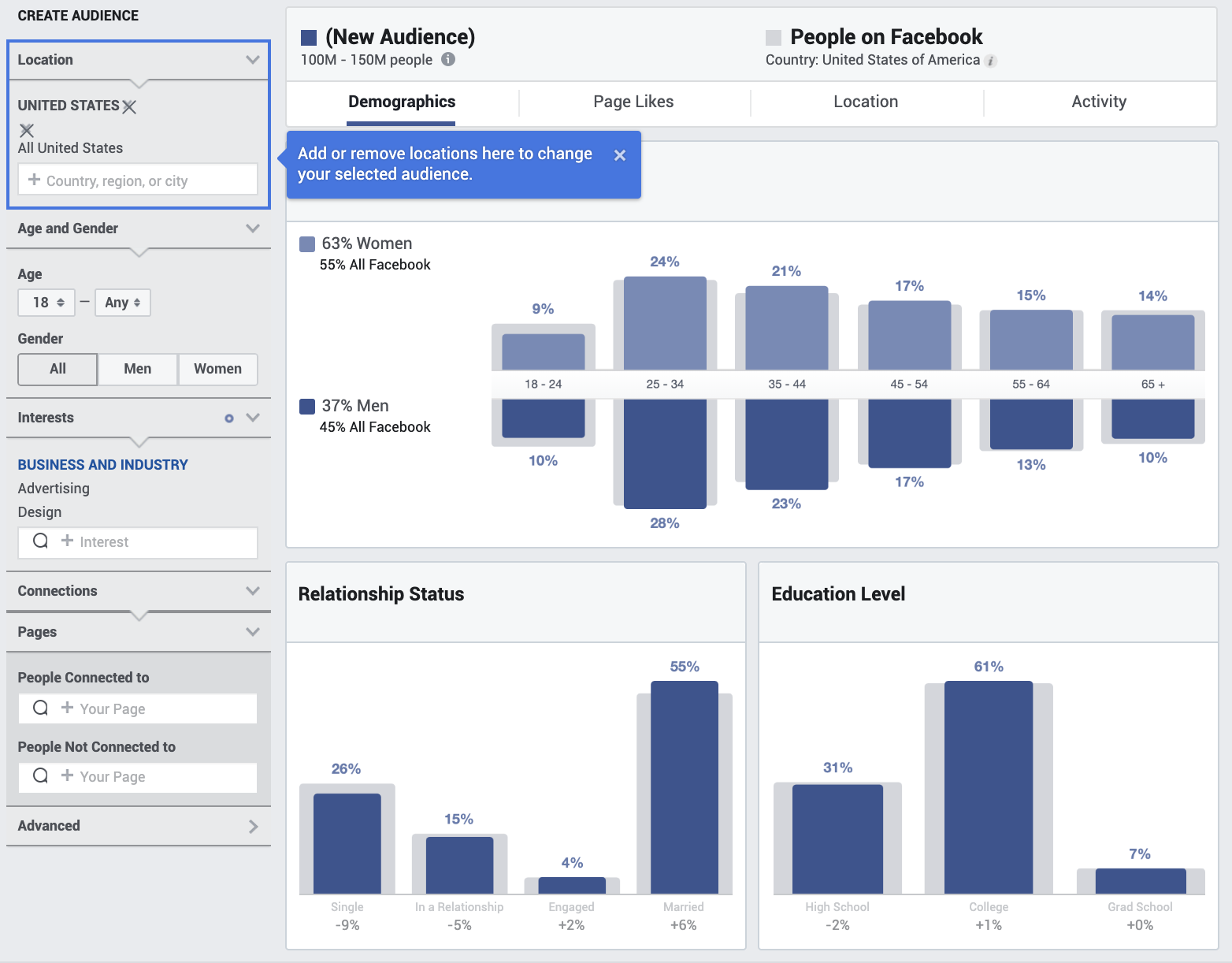
Note: On July 1, 2021, Facebook Audience Insights became Facebook Business Suite Insights. With Business Suite Insights, you can see current and potential audiences and can create an ad right with your new saved audience.
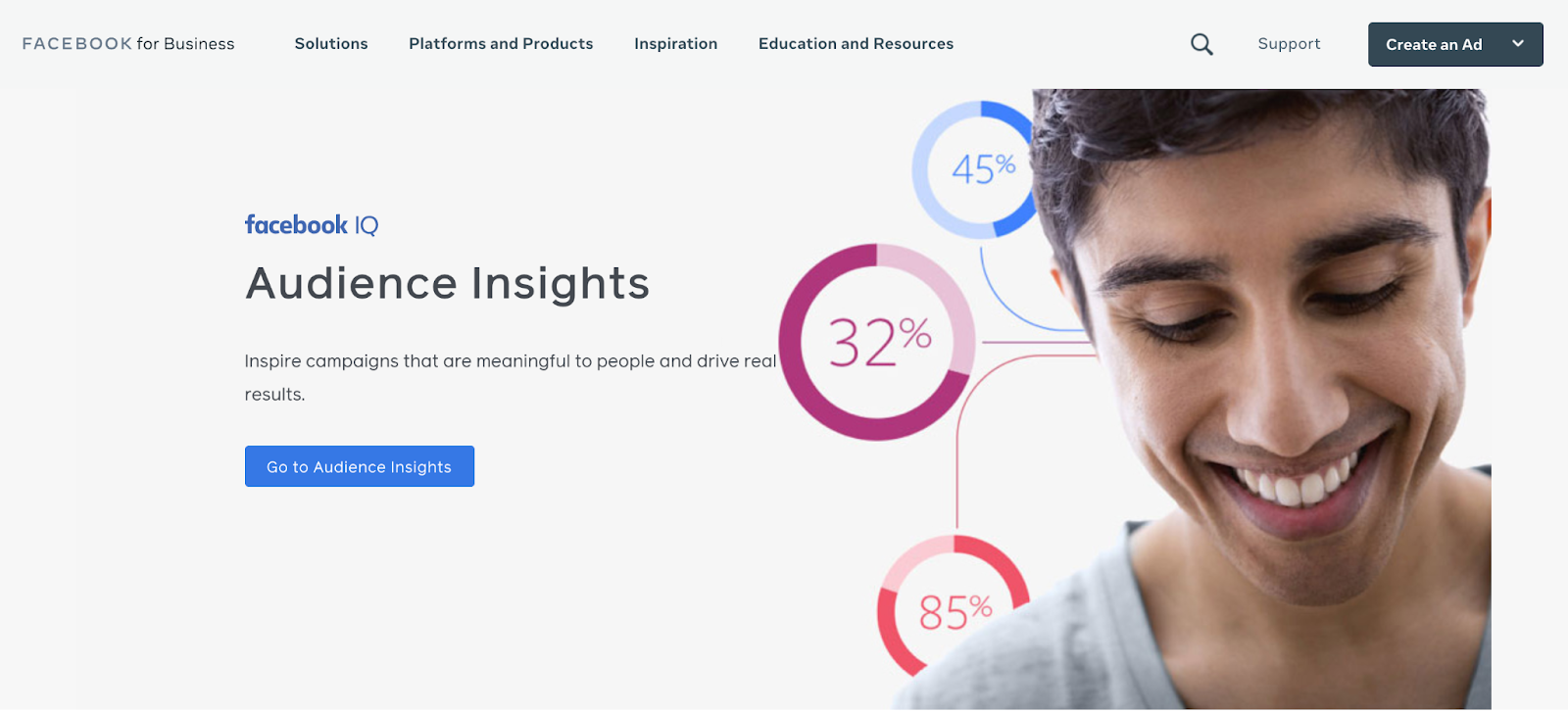
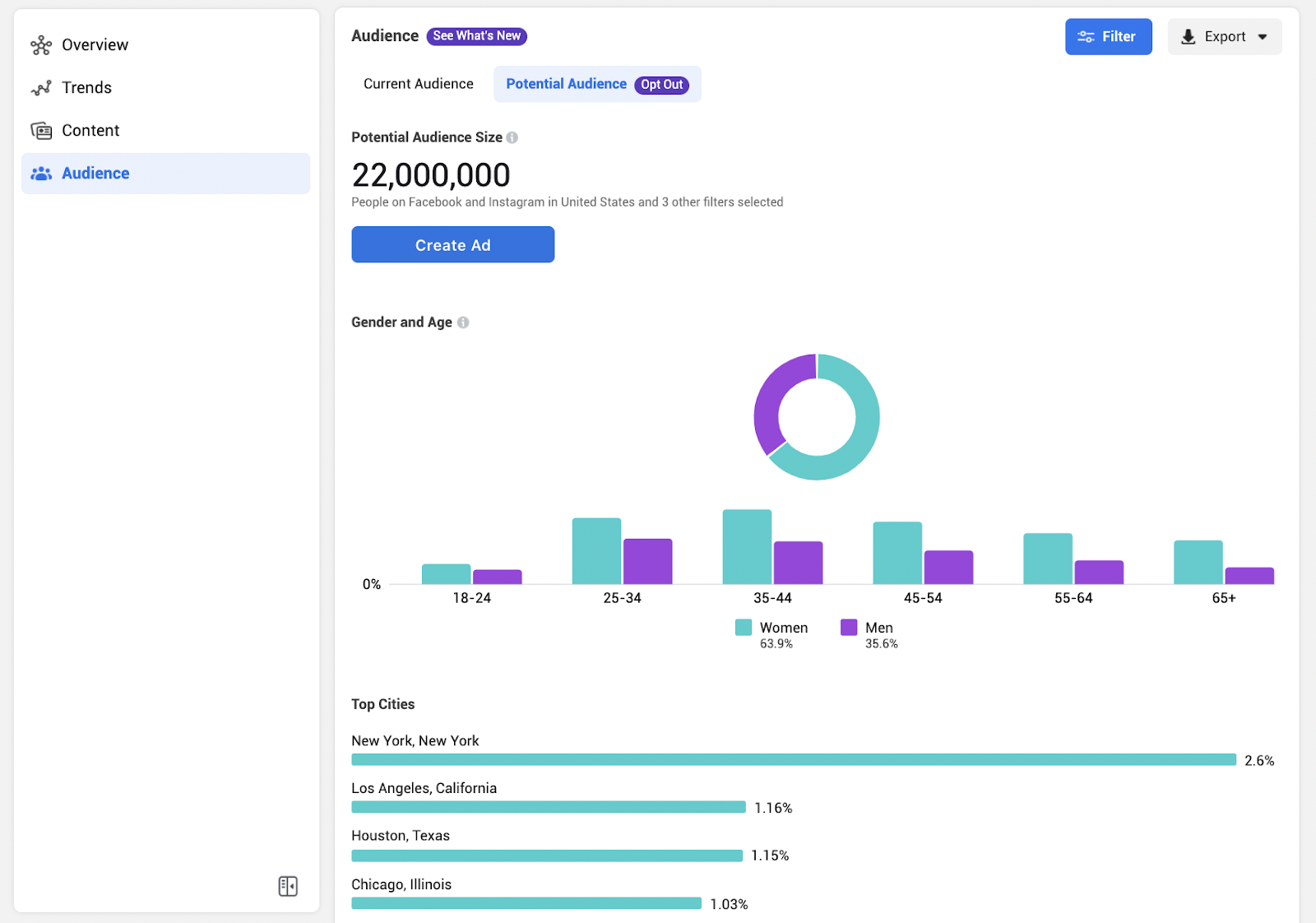
Among the other social networks, Snapchat, LinkedIn, TikTok, Pinterest, and even Reddit all offer their own audience insights specific to their platforms. As you are looking to gain more clarity on which platforms will capture certain audiences, it is wise to create a full-fledged report outlining your marketing plan according to the intent of your audience.
Once you understand who your audience is by finding common characteristics, make sure you know where they live. Every platform has a different core audience/user base.
When looking at different search engines, of course our first thought is Google; however, Microsoft Bing quietly runs in the background with large market wins. Bing claims 34% of all desktop market share worldwide and brings in 136 million unique searches. Not only that, but Bing captures 63 million searchers that are not reached on Google Ads.
So who is searching on Bing? Typically Bing searchers are between the ages of 35-54 and have a household income of more than $75,000. Bing also has much less competition when it comes to advertiser competition, so if you find that your target audience falls within Bing’s core demographics you could have a major advantage in your marketing strategy.
When it comes to Social Media Advertising, don’t rule yourself out just because it seems it may draw a younger crowd. Since August 2012, the presence of older Americans who use Facebook has doubled to 46% of users aged 65+. While many social platforms skew heavier towards newer generations, Facebook is a perfect place to capture that older audience you may be after.
Alternatively, if you are a B2B brand, you might want to check out LinkedIn or even Twitter. LinkedIn and Twitter offer users a social platform for news or business sharing rather than a strict social sharing like the others. This offers your brand a place to capture a decision-maker while they are not in the office but still in the business mindset.
4. When To Target Your Audience
It’s no secret that social ad platforms will reach users in a completely different stage of the buyer’s journey than search platforms. Never forget the intent levels of your audience and their position in the buying cycle, as this will play a major role in the way you speak to your audience on each platform.
Knowing when to target your audience is essential to the overall success of your campaigns and ultimately your business. The funnel differs slightly from B2B to eCommerce businesses in that the time from research to purchase is vastly contrasting.
Speaking To Your B2B Audience
For B2B businesses, understand who your audience is at each stage of the funnel. Meaning, who does your product/service benefit, who will actually pay for the product/service, and who will champion your product or service. Knowing when to hit each of these segments and how to arrange your offer message will streamline the process and leave your sales team singing your praises.
When creating campaigns around your target audience in the B2B space, you will want to match your ads and copy to your target audience. Do not have the same ads running for the HR Manager that you would have run for the COO. Each of these titles have specific needs that need to be established and if you miss the mark on delivering that solution, you will likely fall victim to the continued scroll.
Speaking To Your eCommerce Audience
On the eCommerce side, the funnel is slightly different as the user in the top of the funnel is typically the same individual at the bottom of the funnel. However, one major difference here is remembering the concept of gift-giving.
Taking it back a couple of sections with the layout of demographics, well on the eCommerce side, it is likely that a percent of your customer base could be buying your products for someone else. With this in mind, I recommend never excluding any demographic from the start; but rather, only exclude based on performance.
Just because your product services a specific demographic more than another, does not mean you can’t speak to everyone. If you see in your audience insights that you have some men buying your product geared towards women, use that as an excuse to test new imagery and copy that men will resonate more with. You may find that this increases your overall performance and you have just unlocked a new demographic you never anticipated.
5. Utilizing All Forms of Marketing
The most important piece of the puzzle when creating a marketing strategy for your target audience is to leverage all forms of marketing to nurture your users. Don’t forget that these are real people that need the care and attention from your brand.
Incorporating SEO, email marketing, and content marketing into your digital marketing strategy will cover all of your bases. However, if you have taken the approach to segment your target audience by similar groupings in Google and social media, then these channels need to reflect those tailored approaches as well.
A McKinsey Study reflected that 96% of consumers reported that they receive mistargeted promotions and 94% expressed their annoyance of having to take action either by deleting or unsubscribing from emails. Personalization is key here and with many platforms, can be streamlined seamlessly with some upfront work.
Want to create a robust conversion funnel but don’t know where to start? We created a walkthrough of developing a successful conversion funnel here.
6. How To Expand Your Target Audience
Have you performed audience research and discovered your target audience is vastly different than your target market? Is there a certain demographic that is standing out as an anomaly in your customer index? Lucky for you, this is the perfect opportunity for you to expand your target audience!
Just because someone falls outside of your target market, does not mean you can’t create a campaign (or even product line) for them. In fact, this shows you that your product is desired by more people than you thought.
Let’s take a look at what Vans®, the skate shoe conglomerate, did to adjust to a segment of their target audience the brand was not originally intended for.
Vans started as a rugged shoe company that quickly adopted the target audience within the skateboarding scene. In 1993, Vans discovered their target audience had an affinity for snowboarding – leading to the introduction of the Vans Snowboard Boot. Fast forward to 2020 and Vans now has taken full advantage of each specific target audience segment within its larger target customer group, even though many of these users may not exist in their original target market.
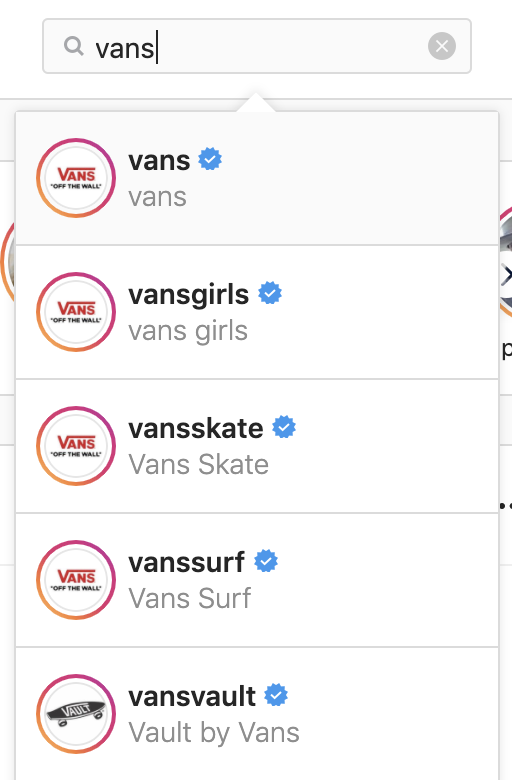
Vans is the perfect example of how one brand can take their target market and adapt to what the data is showing to create nothing short of success.
Appreciate Your Target Audience
When you learn to love and accept your target audience, you will watch your brand soar. You’ll see your brand loyalty grow and your audience naturally expand.
Oftentimes, brands will constantly chase a target market even if it seems like another audience is eager to buy their product; however, the brands that seem to claim their industry are the ones that welcome all user segments in their customer list.
As we saw with Vans, giving each target audience segment their own VIP treatment with a specified journey is the way to get new customers through market segmentation. Now, an individual Instagram per audience segment may be a bit extreme in your business case but that’s not to mean you can’t create separate campaigns or drip campaigns.
Always remember to appreciate your customers and continue to expand your target audience. And
Eager to grow but don’t know where to begin? We can help – get in touch and let us walk you through the best practices and strategies to begin growing your customer base.